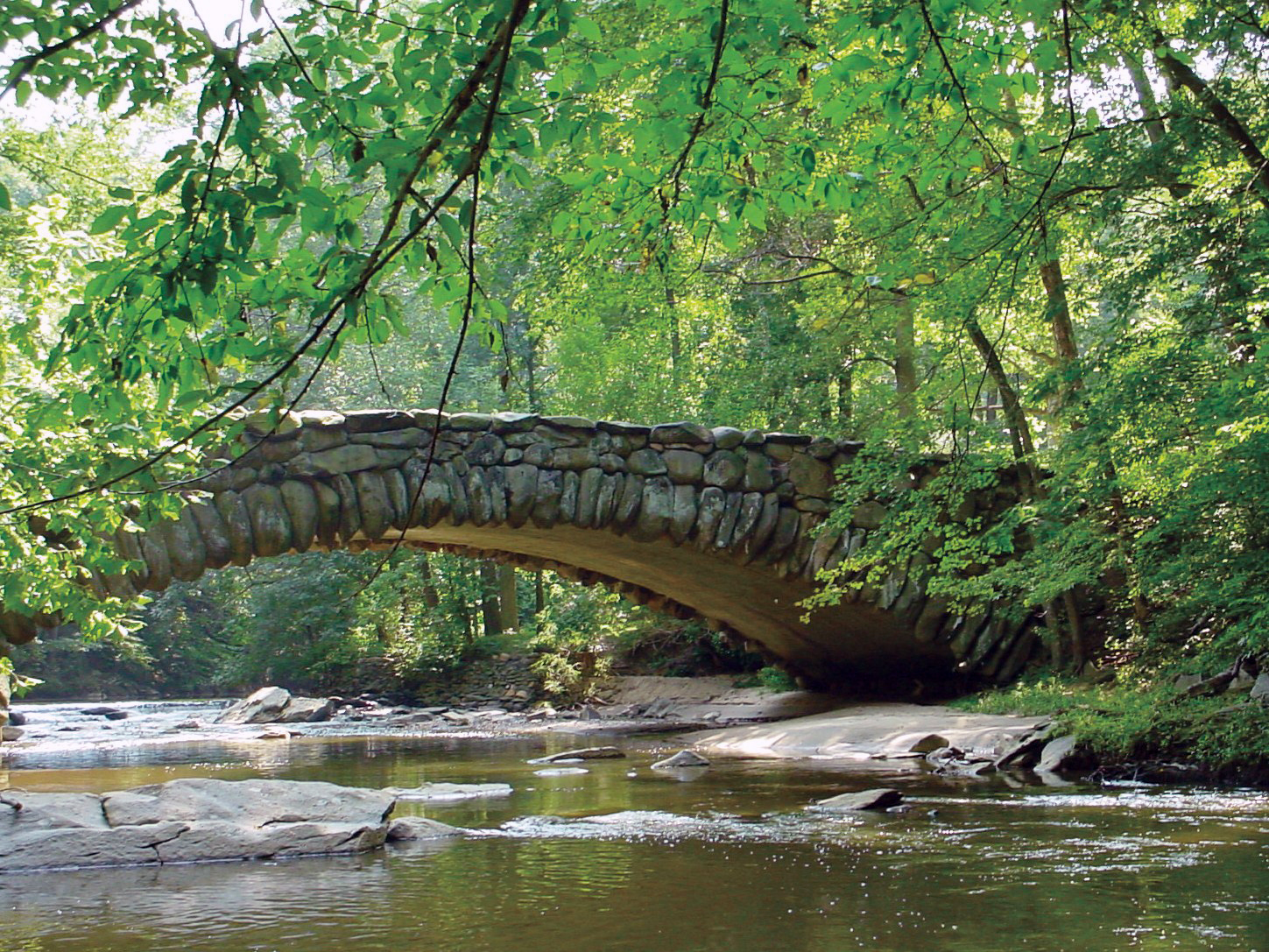
Kathleen Cole/CC BY-SA 4.0 Deed

Kathleen Cole/CC BY-SA 4.0 Deed
By Kartik Mukalla and Abe Rothstein
D.C. is known for its hustle and bustle, but amidst the concrete and pavement, there is a massive home to nature. Sprawled throughout the nation’s capital in between all of the concrete and humidity, sits Rock Creek Park, a 1,754 acre park.
A majority of this oasis sits in the city’s northernmost area, Ward 4. “We are blessed with plentiful green space and parks, including more of Rock Creek Park than any other Ward,” said councilwoman Janeese Lewis George on her website.
But hidden amongst the green foliage of Rock Creek Park, a threat to the park’s biodiversity is hiding in plain sight.
Invasive species like Golden Rods, Japanese stiltgrass, and the Porcelainberry are a constant concern to park officials and members of the Rock Creek Conservancy, an organization whose mission is to steward and restore the area’s natural landscape.
On Oct. 28, 2023, the Rock Creek Conservancy partnered with the National Park service to hold a Native Species Planting Event in order to engage the local community in planting native species across park lands.
With 12 volunteers on hand to start planting, the event began with an informational session. Volunteers learned about the proper ways to dig the hole where the plant would live for the remainder of its life and to cover it with the right amount of dirt. Throughout the autumn day, the sun beamed down on the volunteers while they were on their knees in the dirt planting native species. Over 50 plants were distributed to the volunteers during the three hour event. The Rock Creek Conservancy offers events like this every week.
With our climate seeing drastic changes, there have been major challenges that the Conservancy has faced, specifically regarding invasive species. Drought and sporadic rainfall have played a major role in the increase in invasive species in the park, said Katie Swiere, Community Engagement Coordinator and one of the Resiliency Directors.
Combating the spread of invasive species is one of the main priorities for the Conservancy. Invasives are able to take over, as many of the species are able to thrive despite much rainfall. As the native species require more rain, they are often unable to survive in times of drought. To tackle this massive operation, the organization has taken many different steps, some of which could be seen as unconventional.
This includes the training of “weed warriors,” who are a group of volunteers who scour the park in search of invasive plant species and remove them. The park will then replant using native species either through volunteer work, or through their staff.
Rock Creek Conservancy website says that the Warrior Program is “a volunteer program that assists the park with efforts to control and contain the spread of invasive, non-native plant species. In doing so, the native flora of the park can be preserved for the enjoyment of this and future generations.”
Programs like Weed Warriors allow volunteers to help out park staff according to their own schedules.
“The Weed Warrior program has special volunteers with exempted permits to work in the park, and come in on their own times,” Swiere said. “We make sure they have tools, know the plants that they are removing, and how to do what they are going to do.”
Certain invasive species are threatening native species in the park by outcompeting them for sunlight and key nutrients found within the soil. Bidens alba, known to many as “Spanish Needles,” may be annoying if stuck in your clothes, but are a native species to Rock Creek Park that are at risk of being outcompeted against. Spanish Needles are one of the most rapidly spreading invasive species in the United States, as the weeds are able to spread quickly, and grow from one to two feet. The species is resistant to change in weather in addition to not needing too much water to survive, only making it easier to thrive in conditions like Rock Creek Park.
Goldenrods are one of the most common invasive species that have wreaked havoc among the native species. This species is a common garden plant that has spread through birds. Typically, birds eat the seeds of goldenrods and eventually defecate the seeds. As the park maintains a large population of birds, the seeds are planted indirectly through their waste, and have caused damage to the park.
Swiere describes the chain reactions that can be caused by invasive species, specifically goldenrods.
As goldenrods spread, they are known to attract pollinators such as caterpillars. While caterpillars bring forth beautiful butterflies down the line in their development, they require a heavy diet of leaves and greenery. This leaves the native plants of Rock Creek Park at risk of being overly consumed by the crawling creatures.
To assist, we joined a native species planting event, in which we learned about the toll that invasive species are having on the biodiversity of the park, and the push for “people-powered restoration,” said Ashley Triplett-Peltzman, program director and one of the resiliency heads at the organization.
“Being able to have the community to support this beautiful park is necessary in the face of climate change,” Swiere said. “We are so lucky to have so many members of the community wanting to protect this park.”
Invasive plant species have already laid their claim in Rock Creek Park, but there is still time to protect the parklands. Whether through volunteer programs or by the employees of the Conservancy itself, the fight for conservation and restoration persists. Community volunteer work and engagement events with Rock Creek Conservancy take place every week and can be found on the Rock Creek Conservancy Website.